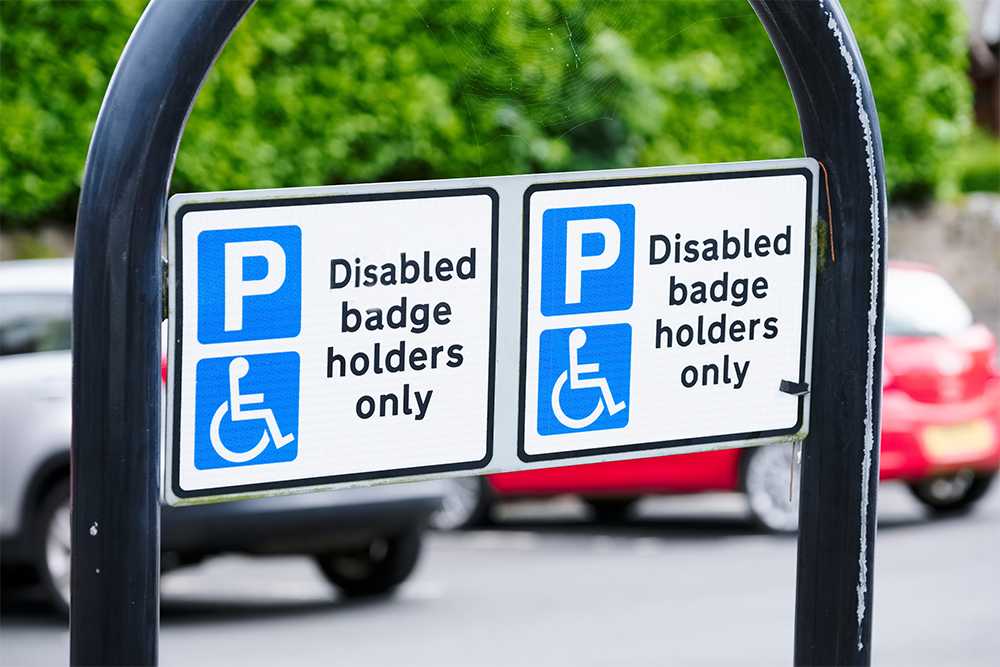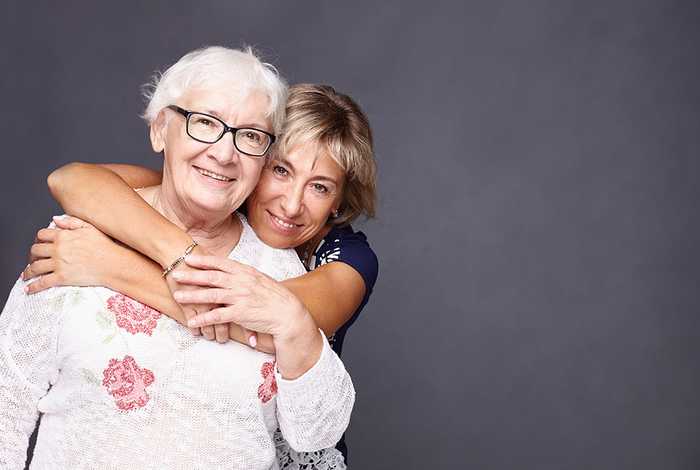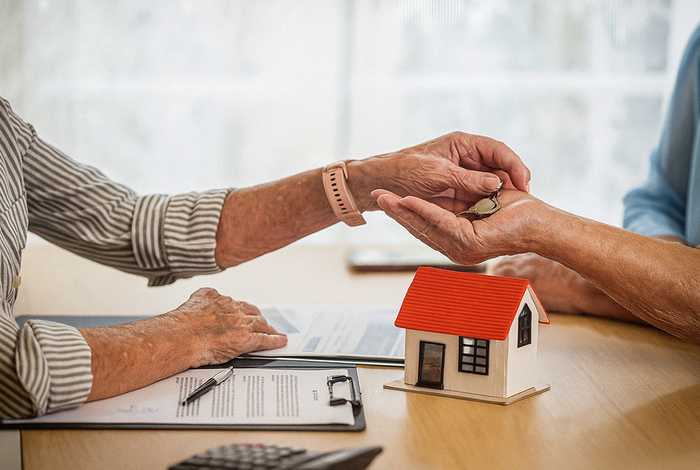Posted by Janine Griffiths
Guide to applying for a blue badge as a carer

Caring goes far beyond kind words and comforting cups of tea.
It’s often about planning ahead and juggling the needs of someone else alongside your own. So when we talk about applying for a Blue Badge as a carer, we’re really talking about making everyday life a bit more manageable for you and the person you support.
A Blue Badge doesn’t just mean a parking space. It can mean less time spent struggling to find access, fewer stressful trips, and a greater sense of ease when you’re out and about. If you’ve ever felt that quiet sigh of relief when a space is available right where you need it, you’ll know what a difference it can make.
For carers, it’s one of the rare practical tools that actually lightens the load. It removes a layer of daily difficulty that many people never even have to think about. When you’re caring for someone with mobility needs - whether those needs are obvious or hidden - being able to park safely and close by isn’t a luxury. It’s a necessity.
At its heart, the Blue Badge scheme is about improving dignity and independence. It’s about making sure the person you care for can get where they need to go with as little stress as possible. And, perhaps just as importantly, it’s about making your life as a carer that bit smoother too.
What is a Blue Badge?
If you’re looking into applying for a Blue Badge as a carer, it helps to first understand exactly what the Blue Badge scheme is and why it exists. At its heart, it’s a way of making life easier for people who live with mobility challenges, whether those challenges are visible or not. It lets you use more accessible parking options, including disabled parking spaces.
A Blue Badge gives the person who has it certain parking privileges. That might mean being able to park closer to entrances or in places where parking is normally restricted. These little allowances can make a huge difference and increase confidence when getting out and about.
Although the badge is always issued to the person with the condition or disability, carers often play a vital role in the process. You can apply on someone’s behalf, help manage renewals and make the most of the practical freedoms it provides. In many ways, it’s a small piece of plastic with a very big purpose: helping people live more independently, with dignity and ease.
Why apply for a Blue Badge?
If you’re in the thick of caring for someone then applying for a Blue Badge might feel like a small step with a big impact.
However, the truth is it helps cut down long walks to hospital doors or shops, makes it easier to park in unfamiliar places and removes a whole layer of guesswork. For the person you’re supporting, it can mean a stronger sense of independence. And for you, it can mean less physical strain and more time to focus on what matters.
Although the badge is always issued to the person with the condition or disability, carers often play a vital role in the process. A Blue Badge takes away one more obstacle, making each journey a little less tiring and a lot more manageable.
Who is eligible for a Blue Badge?
When it comes to applying for a Blue Badge as a carer, one of the first things to understand is who actually qualifies.
Some people qualify automatically if any of the following applies:
- They receive the higher rate of DLA mobility
- Score 8+ points under the Personal Independent Payment (PIP) ‘moving around’ activity of the mobility component
- Are registered blind
- Receive the War Pensioners’ Mobility Supplement
- Got a lump sum (tariff 1–8) under the Armed Forces Scheme for a serious walking disability
- Score 10 points on the PIP ‘planning and following journeys’ activity due to overwhelming psychological distress.
Others may be considered if they are medically assessed as having medical needs or significant mobility challenges. It could also include things that aren’t immediately obvious, like cognitive impairments or invisible disabilities that still make travel and access difficult.
If the person being cared for is not automatically eligible for a Blue Badge then it is important to demonstrate how those challenges affect daily life, during the application process. Whether it's walking even short distances, navigating unfamiliar places, or managing fatigue, it's these real-world difficulties that form the heart of the application.
Applying for a Blue Badge as a carer
Once you’ve decided that a Blue Badge could help the person you care for, the next step is getting started with the application. It might feel a little daunting at first but it is something you can do, and it’s more straightforward than it might seem.
You’ll need to apply online, or by requesting a paper form. The GOV.UK website can point you in the right direction based on your postcode. As a carer, you’re completely within your rights to apply on someone else’s behalf.
To make things smoother, gather everything you might need in advance. That includes details like their NHS number, a list of any medications, their GP’s contact info, and evidence of how their condition affects daily life. You don’t need to rush because you can often save your progress and return to it once you have all the pieces.
It’s not just a form. It’s a way of giving someone back a little bit of independence. And as their carer, you’re the bridge that helps make it happen.
Documents you will need to apply for a Blue Badge
To apply for a Blue Badge, you will need the following documents belonging to the person being cared for to get started:
- Proof of identity
- Proof of address
- A recent head and shoulders digital photo
- National insurance photo
- Contact details
For more information on what you may need visit the government website.
To support the claims in your application, you may later be asked to provide their medical records, as well as any physical evidence like walking aids or prescriptions that help demonstrate the impact of their disabilities.
It is important to gather everything you need before starting the application to avoid any delays.
How much does a Blue Badge cost?
The amount you pay will typically depend on your local council. However, as a general guideline, a Blue Badge typically costs up to £10 in England and £20 in Scotland, while in Wales, it’s issued free of charge.
Badges are typically valid for up to three years, but they don’t renew automatically. You’ll need to reapply before the current badge runs out to avoid any gaps in support.
What happens after you apply?
So, you’ve taken that first step and sent off your application. What now?
Once your Blue Badge application is in, the waiting game begins. Most decisions take up to 12 weeks, though it can feel like longer when you're hoping for that bit of freedom and reassurance. Try to see this as time well spent - the process is there to make sure those who really need a badge, get one.
Sometimes, the council might invite you to a mobility assessment. Don’t worry, this is just a chance to show how the individual's condition affects their day to day. It’s not a test, and they will not be expected to “prove” themselves under pressure. If you're applying for a Blue Badge as a carer, it’s also a useful opportunity to speak on behalf of the person you support.
If the application is successful, the badge will arrive in the post and it will need to be displayed clearly in the vehicle whenever it is used. It’s a pass to a little more ease and independence, so it should be kept safe.
But if the application is turned down, neither yourself or the person you are applying for should lose heart. The decision can be reviewed via the local council. Sometimes, all that’s needed is a bit more evidence or clarification. Stay with it. If you believe you or the person you care for needs a badge, your voice matters.
Renewing a Blue Badge
It’s easy to think of your Blue Badge as a long-term lifeline because in many ways, it is. But like most things that make life a little easier, it does come with an expiry date.
Most Blue Badges are valid for three years, but they don’t renew themselves. It’s important to mark the expiry date somewhere you won’t forget, because once it runs out, it’s no longer valid and that could lead to an unexpected fine. Ideally, aim to start the renewal process about six months before the badge is due to expire. That gives you time to gather any updated paperwork, especially if their health or mobility needs have changed since you first applied.
If you’re applying for a Blue Badge as a carer, keeping on top of renewal dates is just one more way you can help support the person you care for. Ultimately, it saves them the stress of interruptions to their parking access and keeps their independence going strong.
A small badge, a big difference
It might not look like much - a bit of plastic and a printed number but the impact of a Blue Badge can be life-changing. For many people, it’s not just about parking closer to the shops or the hospital entrance. It’s about making the everyday feel a little more possible again.
A Blue Badge can mean more spontaneous outings and less pain from walking long distances. For carers, too, it’s a weight off the shoulders.
So if you haven’t checked it out yet, now’s the time. You might be eligible, or someone you care for might be. And taking that first step? Hopefully it should be obvious by now that it’s easier than you think.
Looking for care?
Sometimes there may come a time when the level of care required is more than one person can manage on their own. This is when extra help may be necessary. This could be help from a home care agency, respite care, a nursing home or residential care.
Regardless of the type of care needed, Autumna can help. To get started, simply head over to the search bar on our website, choose the type of care required, and type in the location.
We also have a FREE shortlisting tool that not only makes the process of searching for care easier but also matches you to an even more personalised list of providers. Prefer to chat? Our friendly advisors are just a phone call away at 01892 335 330 and phone lines are open 7 days a week.
Receive a Free Care Home Shortlist!
Let our expert team of advisers get your search off to a great start.
Tell us a little about your needs and we'll send you a bespoke shortlist of care homes! Click the button below to begin, it takes just a few minutes.
Other articles to read
From the blog

Older Persons Care Advice
How to talk to your parents about care options
October 2nd, 2025
Learn how to talk to your parents about care options with compassion. Explore choices together and plan for the future with dignity and respect.

Older Persons Care Advice
Guide to empowering and promoting independence in older age
September 30th, 2025
Read our practical guidance for families on empowering and promoting independence in older age, helping loved ones stay confident and in control.

Older Persons Care Advice
Ultimate guide to jointly owned property and care home fees
September 26th, 2025
Understand jointly owned property and care home fees, how assessments work, and steps to protect your finances and plan ahead with confidence.
Frequently Asked Questions
No. A Blue Badge is only valid when the person it was issued to is in the vehicle, either as a driver or a passenger. Using it without them can lead to fines or confiscation of the badge.
Yes. While certain benefits may grant automatic eligibility, others can still qualify after an individual assessment based on medical needs and mobility challenges, even if they don’t receive specific allowances.
You’ll need to contact your local council to report the loss or damage. They’ll advise you on how to request a replacement, which usually involves a fee and supporting documentation.
Yes, but only when transporting the person the badge was issued for. The badge follows the person, not the carer or vehicle, so multiple carers can legally use it as long as the eligible individual is present.
The UK's largest & most detailed directory of elderly care and retirement living options
10,330
Care Homes
11,946
Home Care Services
1,658
Live-in Care Services
1,756
Retirement Living Developments
Autumna is the UK's largest and most comprehensive later-life living & elderly care directory. Our detailed search facility and team of expert advisors can help you find the best care homes, nursing homes, retirement homes, retirement villages, home care, and live-in care services for you or your loved one's needs. Our website is free to use, we are proudly independent, and we never take referral fees.






